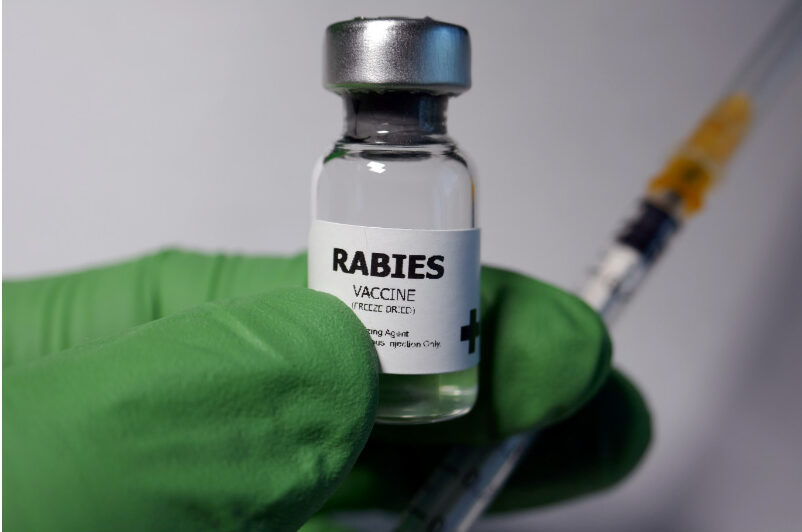What Every Dog Owner Should Know About Heartworm Disease

Is Your Dog At Risk for Heartworm Disease?
As pet parents, we know that there are many risks to our dogs’ health that we cannot prevent. Heartworm disease, however, is virtually 100% preventable, yet over 100,000 dogs suffer from this life-threatening disease in the United States each year. Learn why heartworm disease is on the rise and how just one missed dose can lead to serious complications.
What Exactly Is Heartworm Disease?
Heartworms are internal parasites that your dog can contract anytime they are bitten by a mosquito infected with microfilariae, tiny heartworm larvae.
When dogs take their monthly dose of heartworm preventative, any larvae that they may have contracted since their previous dose is eliminated before it can cause disease.
In dogs that do not take their heartworm preventative, though, larvae travel to the blood vessels surrounding the heart and lungs. It takes as little as 40 days for larvae to become too large to be killed by your dog’s monthly preventative. So, even just one missed dose can lead to an infection.
What Happens When Dogs Develop Heartworm Disease?
Once a dog contracts heartworm disease, it takes about six months for the larvae to mature into adult heartworms, ranging from six inches to 12 inches in length. Only mature heartworms show up on an annual antigen test, and many dogs show no symptoms in the early stages of the disease.
Meanwhile, as the heartworms take over the blood vessels, they can cause lasting, often permanent damage. Dead heartworms and larvae cause the immune system to react, leading to inflammation and irritation that can compromise heart and lung function.
In advanced cases, the heartworms move into the right side of the heart and cause blockages, stretching and weakening of the artery walls, heart failure, difficulty breathing, lethargy, and eventually, death.
The rate at which heartworm disease progresses varies. Athletic dogs are more likely to experience symptoms earlier on, while small dogs have narrower blood vessels that are more easily blocked by a heavy parasitic load.
How Are Dogs Treated for Heartworm Disease?
The sooner a heartworm positive dog is diagnosed and treated, the greater the chance they will survive and suffer little to no permanent organ damage. However, since many dogs do not show symptoms for months, and infections of less than six months can go undetected on an antigen test, it’s not uncommon for the disease to go undiagnosed.
Heartworm disease is treated with a series of injections and medications, and in some cases, surgery, that depend on the severity of the disease and the overall condition of the dog.
Melarsomine is the only FDA approved drug used to treat heartworm disease in dogs. It’s an organic arsenic compound that’s administered as a series of three injections: an initial dose, the second, after a rest period of 30 days, and a third dose given after 24 hours.
Complications can occur when heartworms start to die off, causing the immune system to react. From the start of treatment to eight weeks after the last injection, the dog will need to be on strict crate rest, as overexertion can force dead worm particles into blood vessels in the lungs.
Along with injections, some dogs also need steroids and antibiotics to combat inflammation caused by a bacteria carried by larvae. Pain medication and hospitalization may also be necessary.
What Does It Cost To Treat Heartworms in Dogs?
While the costs of an annual vet visit with antigen testing and monthly heartworm prevention may leave some pet parents skipping doses or putting off their dog’s annual appointment, the costs of prevention are minimal, especially compared to the costs of treating an active heartworm infection.
According to the American Heartworm Society, treatment for heartworm disease starts at about $1200 for a dog experiencing little to no symptoms in the early stages, and costs can quickly rack up with the costs of hospitalization and additional medications, testing and treatments to manage complications and long-term effects.
Even with treatment, not all dogs survive heartworm disease, and the pain, discomfort, and uncertainty comes at immeasurable costs.
Why Are So Many Dogs Getting Heartworm Disease?
Despite the life-threatening complications of heartworm disease, cases are on the rise across the United States.
One reason could be the rising temperatures and shift in seasons happening in many regions, creating unseasonably warm days during the winter, earlier and longer spring and summer seasons
Skipped doses, delayed testing, and misinformation could put your dog’s health at risk.
Dogs need heartworm protection year-round to protect their health. Only preventatives clinically proven to be safe and effective can be used to prevent heartworm disease. Don’t delay – make your appointment to have your dog tested for heartworms, renew your prescription, and order heartworm preventative.





